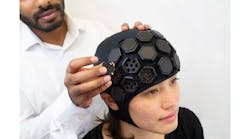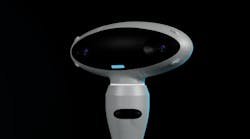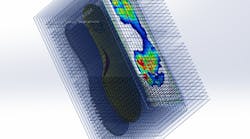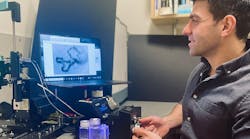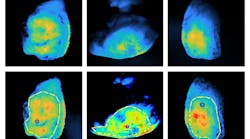Continuously confronted with new system challenges to solve unforeseen application requirements, machine-vision designers find that building on top of old methods can provide new solutions that save costs, improve performance, and increase reliability. Such vision systems are combining 2- and 3-D imaging for inspecting semiconductors, modifying commercial maritime radars, extending x-ray radiology techniques, improving original image-compression features for JPEG-2000, and changing existing test equipment into new digital imaging and display instruments.
A semiconductor inspection system combines available 2- and 3-D imaging to inspect 6- and 8-in.-diameter bumped wafers used to produce chip-scale integrated circuits. The results, contributing editor Larry Curran says, provide timely fault statistics, improved assembly yields, and cost savings (see p. 25).
At major airports, air-traffic controllers must deal with inbound and outbound aircraft, taxiing aircraft, and illegally parked or moving vehicles and airplanes. To help traffic controllers, a surface-movement radar has been developed from a maritime design, reports contributing editor John Haystead, that is capable of tracking all airport ground traffic and detecting potentially hazardous situations (see p. 35).
To meet the overwhelming imaging demands of medical information systems, workstation suppliers and hospital professionals are cooperating to build standard infrastructures to handle imaging and patient data. They are promoting the digitization of medical images, called DICOM, to facilitate interoperability of medical equipment used in picture archiving and communications systems, according to contributing editor Joe Hallett (see p. 41).
The JPEG 2000 emerging standard for image-compression software, which is scheduled for publication as an international standard next month, achieves reliable still-image reduction coding using a discrete-wavelet-transform method. As spotlighted by editor Andrew Wilson, JPEG 2000 provides the best results among existing standards while offering error resiliency, flexible scalability, and region-of-interest coding (see p. 49).
Just as synchronized oscilloscopes gave way to vectorscopes and waveform monitors, new digital imaging standards are mandating new measurement methods and new test instruments. This month's Product Focus by editor Andrew Wilson covers the latest waveform monitors, vectorscopes, and digital oscilloscopes that help engineers perform detailed tests on the video signals generated by machine-vision systems (see p. 55).
George Kotelly, Editor in Chief[email protected]

